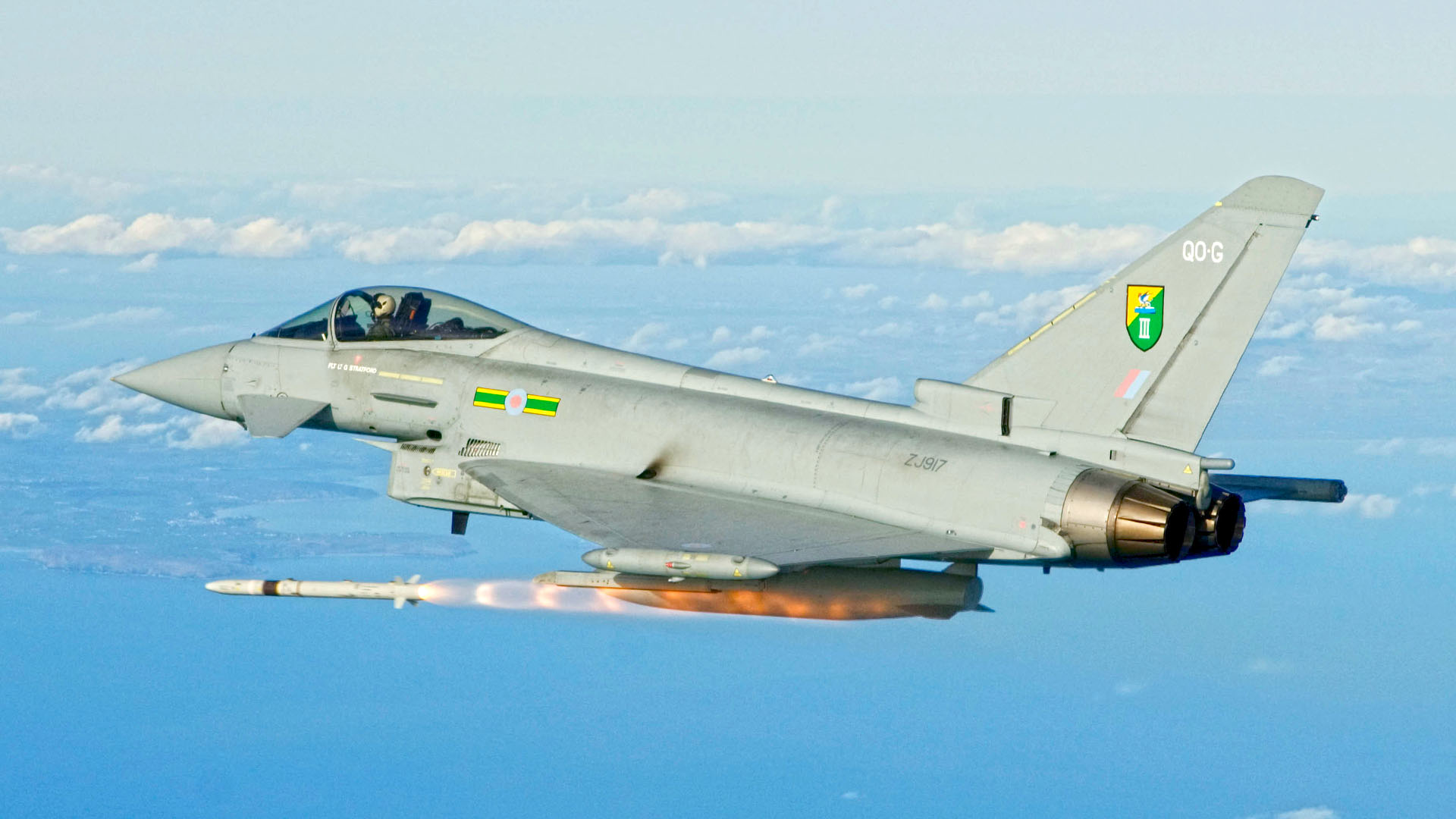British Prime Minister Rishi Sunak said that “nothing is off the table” in response to a renewed call for fighter jets from Ukraine’s President Volodymyr Zelensky during a high-profile visit to the United Kingdom on February 8. Speculation rapidly began to grow about the possibility of the United Kingdom providing Kyiv with at least some of its older Eurofighter Typhoon jets. So what exactly might be on the table, and is the United Kingdom really in a position to send fighter jets to the Ukrainian Air Force?
Earlier this week, Sunak spoke boldly about British support for Ukraine’s air power needs, stating that the United Kingdom would start training Ukrainian pilots to fly “NATO standard platforms” this spring. “When it comes to fighter combat aircraft, of course, they are part of the conversation,” he added.
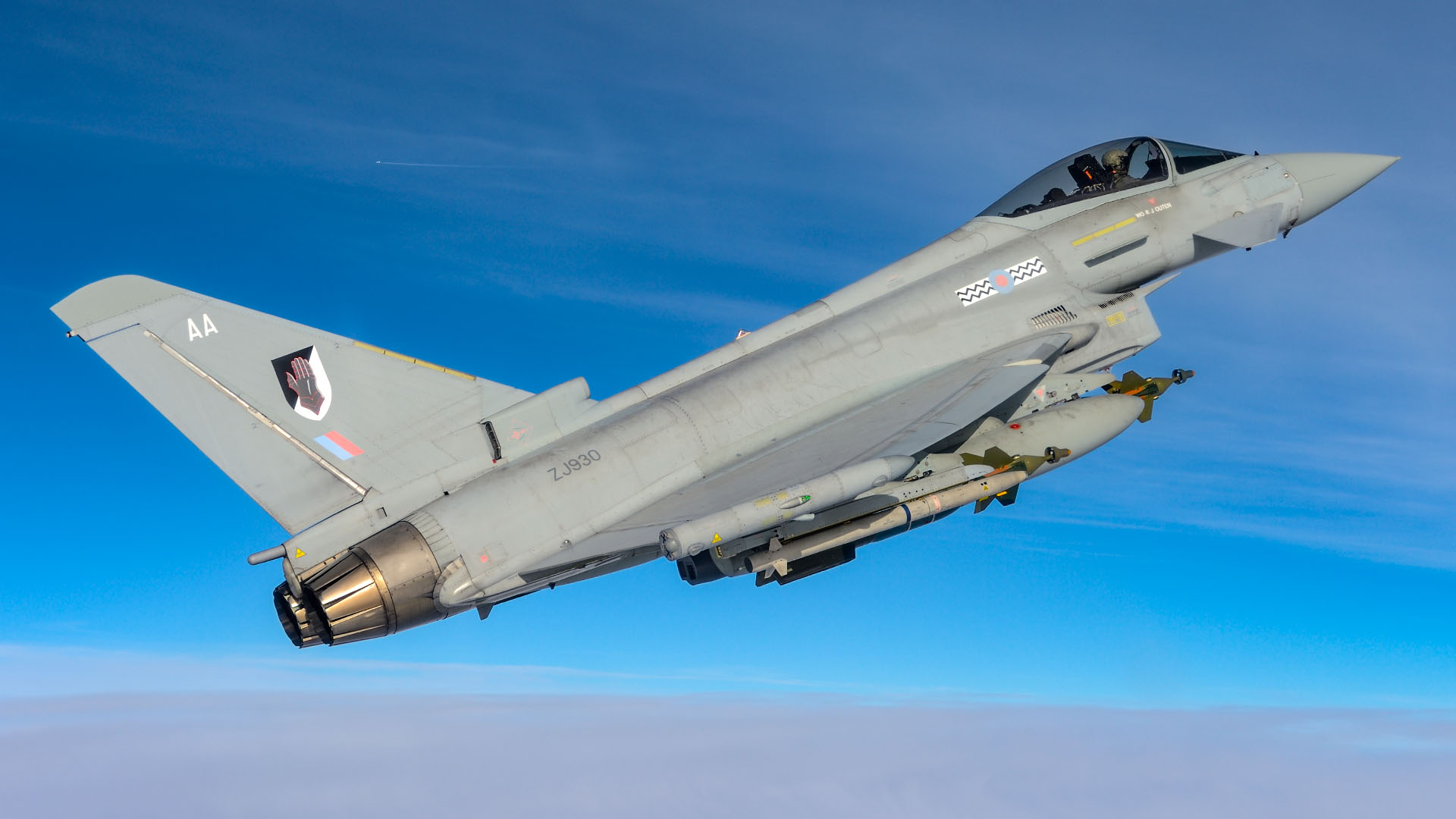
The Prime Minister’s office confirmed that U.K. Defense Secretary Ben Wallace would investigate what aircraft the United Kingdom could potentially offer to Ukraine, emphasizing that this is seen as “a long-term solution.” Signing off his speech to the British parliament, President Zelensky commented: “Thank you for your attention. Thank you for your support, and leaving the British parliament two years ago I thanked you for delicious English tea. And I will be leaving the parliament today thanking all of you in advance for powerful English planes.”
But just how realistic would it be to get those “powerful English planes” into Ukrainian hands?
The U.K. Royal Air Force (RAF) currently operates two main types of fighters: the Eurofighter Typhoon and the Lockheed Martin F-35B Lightning. The former is the only one that could be considered for transfer to Ukraine.
The Eurofighter was built by a consortium of European companies in the United Kingdom, Germany, Italy, and Spain and all these countries received the aircraft for their respective air arms. All of these nations will likely need to sign off on any transfer of these aircraft to Ukraine. However, they could also decide to collaborate, sharing the responsibility for the transfer. This could ease both the training of Ukrainian pilots, and facilitate the supply of similar-standard aircraft, but from various sources. The end result would also lessen the impact on each contributing air force.
The well-documented issues with U.K. military pilot training directly impact the training of U.K. fighter pilots for frontline units. A collaborative Eurofighter plan could help circumnavigate those issues in the U.K., by leveraging existing German and Italian training pipelines, for example. Italy is notable in that it has an impressive end-to-end training system that is already being used by a host of international air forces. So, there is a possible international path to training Ukrainian pilots on the Eurofighter.
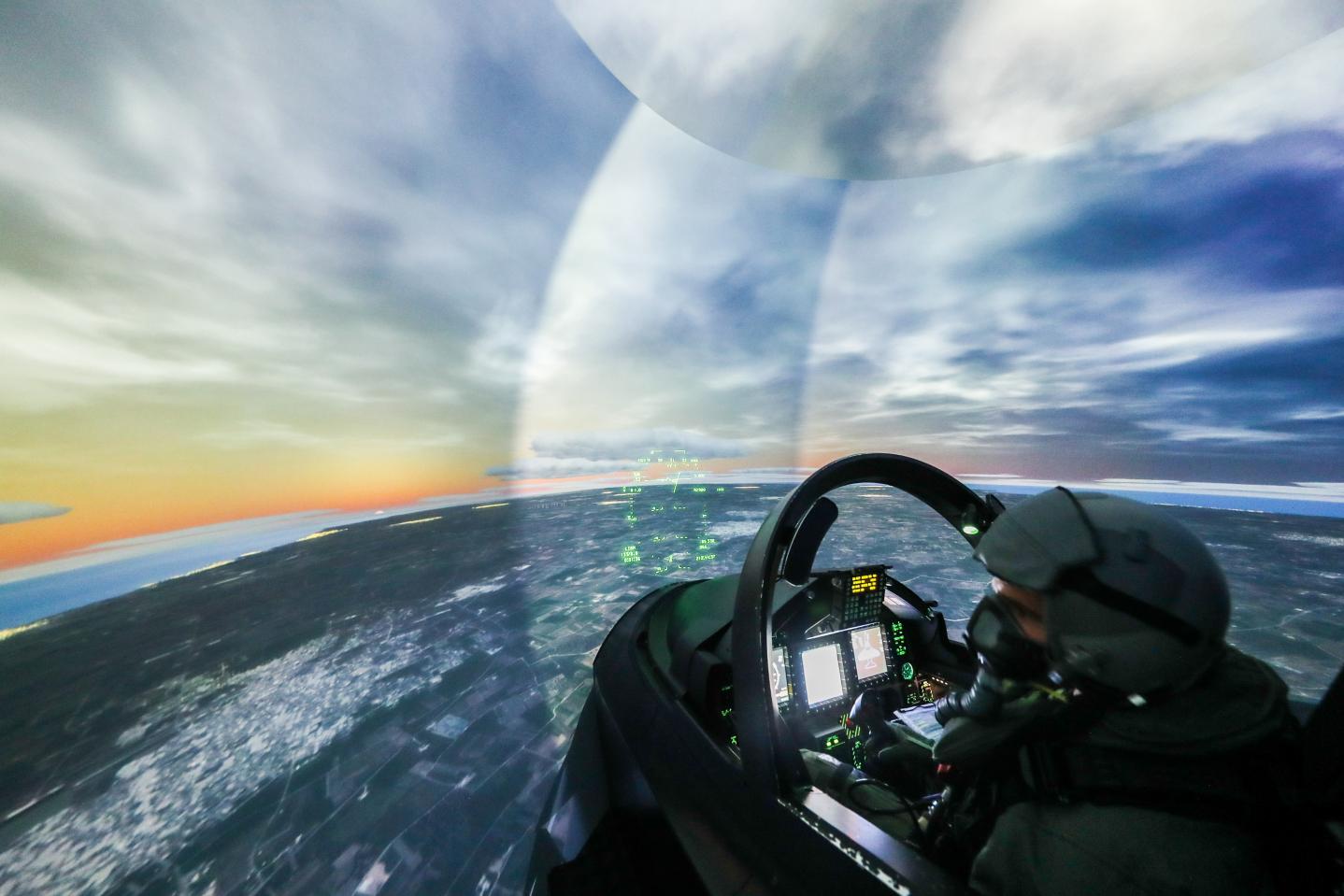
RAF Typhoon standards and upgrades
Returning to Sunak’s notion of British-supplied jets, the RAF has three main standards of Typhoons. The oldest and least capable are known as Tranche 1, of which the RAF received 53 examples, and which entered service beginning in 2003. In common with all Eurofighter partner air forces, these fighters started out as pure air-to-air platforms, with the RAF examples armed with the MBDA Advanced Short Range Air-to-Air Missile (ASRAAM) and Raytheon AIM-120 Advanced Medium-Range Air-to-Air Missile (AMRAAM), plus the onboard cannon. Indeed, even the basic Tranche 1 version offers markedly superior air-to-air capabilities compared to the typical surplus F-16s that have been repeatedly mentioned in connection with Ukrainian fighter transfers.
The RAF later received 67 improved Tranche 2 and 40 Tranche 3 Eurofighters, for a total of 160 of these jets. These more advanced variants feature enhanced avionics and a redesigned forward bulkhead that enables the future retrofit of an active electronically scanned array (AESA) radar. The Tranche 3s were also plumbed for conformal fuel tanks, but these are not carried. The Tranche 2 and 3 aircraft ultimately embodied what the RAF needed Typhoon to be — a truly multirole fighter, serving as the bedrock for a series of stepped enhancements that were ultimately designed to ensure these aircraft could effectively replace the RAF’s combat-proven Tornado GR4s.

Like the Tranche 1s, the Tranche 2 jets actually started out as air-to-air-capable aircraft only. However, air-to-ground capabilities were already planned for Tranche 2 and 3 under the Phase 1 Enhancement (P1E) program, in which the United Kingdom took a particular interest. This was a core upgrade path shared across the partner nations and involved the integration of the Rafael Litening III targeting pod, plus Raytheon’s Paveway IV laser/GPS-guided bomb for the United Kingdom and the GBU-48 (EGBU-16) Enhanced Paveway II (EPW2) for other nations. The P1E contract was signed in March 2007, but it wasn’t until November 2013 that the initial part of P1E and its associated Paveway IV capability was released to service with the RAF.
In the meantime, the RAF broke rank with its European partners as it sought to quickly add a swing-role capability to its air-to-air Tranche 1s, known as ‘austere’ air-to-ground, which would provide a stopgap until the fully multirole Tranche 2 and 3 jets became available. This ‘austere’ capability included adding EPW2 bombs (as opposed to the more modern Paveway IV), plus a Litening pod. As well as a stopgap pending the newer and more capable Tranche 2/3 aircraft, this initiative may also have related to aspirations to employ Typhoon in a combat role in Afghanistan (which ultimately never happened), coupled with the need to retire the RAF’s SEPECAT Jaguars.
The RAF’s second frontline Typhoon unit, No. 11 (Fighter) Squadron at RAF Coningsby, in England, was tasked with leading the initial charge towards this early air-to-ground capability for Typhoon under CP193 or Project ‘Gordian,’ and once the ‘austere’ integration of the targeting pod was complete, the aircraft could self-designate its own EPW2 laser/GPS-guided bombs. This limited multirole capability was declared to great acclaim with an Operational Employment Date of July 1, 2008, at which point British Typhoons had a useful precision-strike capability.
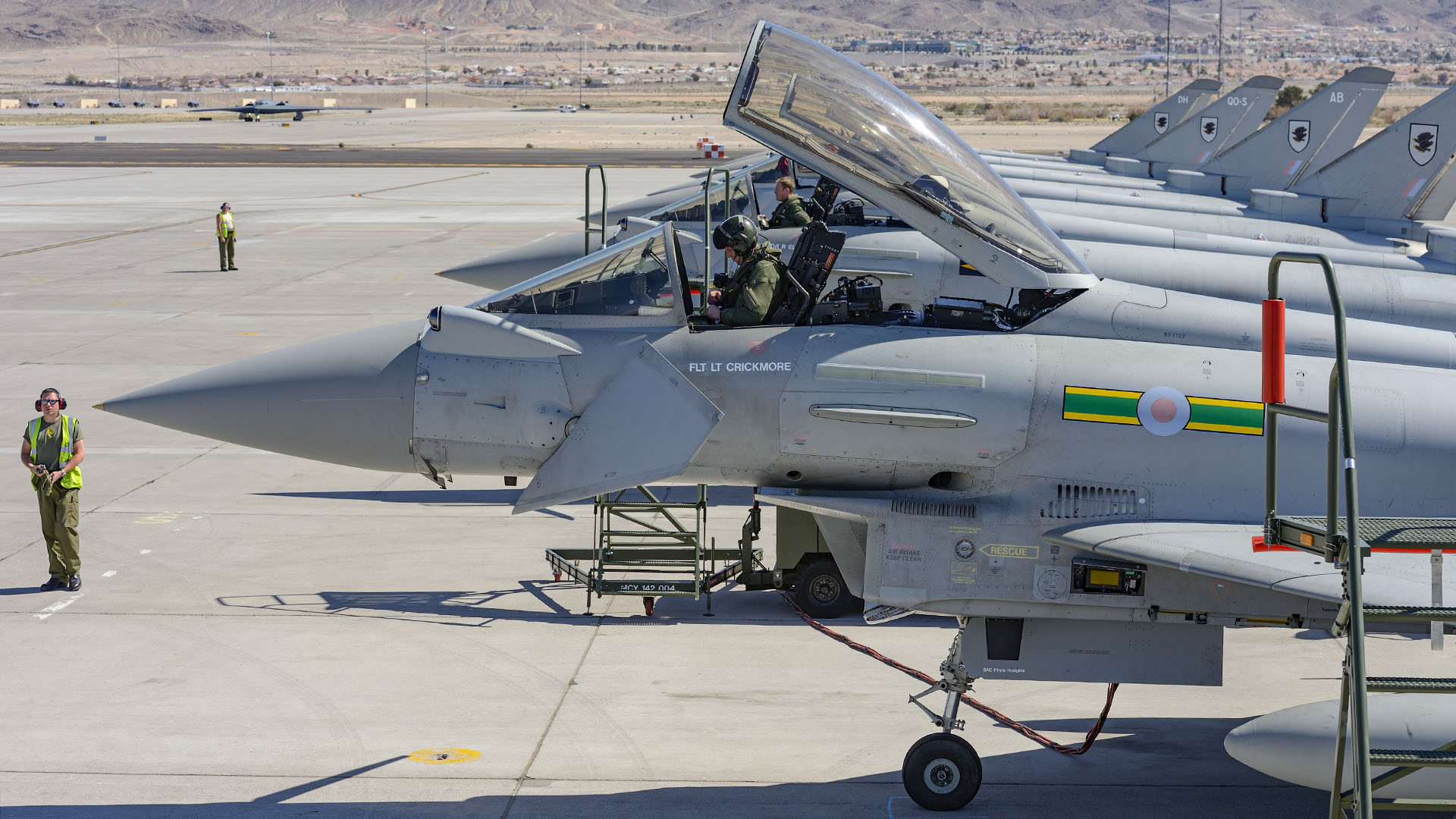
The RAF deployed 10 Tranche 1 Typhoon FGR4s to Gioia del Colle, Italy, on March 20, 2011, to support the enforcement of a no-fly zone (NFZ) over Libya under the United Kingdom’s Operation Ellamy. RAF Typhoons flew their first defensive counter-air (DCA) mission as part of the effort to establish and maintain the NFZ on March 21, 2011. On April 6, the U.K. Ministry of Defense announced that the Typhoons would be ‘re-roled’ for air-to-ground missions over Libya. Having embarked on a swiftly arranged work-up period, on April 12 a single Typhoon on patrol with a Tornado GR4 dropped two EPW2 bombs on two main battle tanks, marking the combat debut for the aircraft in this role.
Despite having been declared multirole-capable in 2008 with the Tranche 1 jets, by the time the Libya mission came around just three years later, the RAF had actually returned its main Typhoon effort toward the air defense mission, amid a lack of allocated flying hours and available aircraft. But the RAF’s Typhoons were able to return to the strike role reassuringly swiftly as the Libya campaign unfolded. Pilots that had flown multirole missions in the Typhoon before were quickly reacquainted with the tactics they already knew. If a pilot had been qualified on the multirole Typhoon before, they only required a simulator ride and one sortie to re-qualify.
With P1E and subsequent stepped upgrades, the RAF Tranche 2 and 3 Typhoons quickly became the service’s primary warfighting aircraft. A series of improvements notably added the MBDA Storm Shadow standoff cruise missile, MBDA’s Meteor beyond-visual-range air-to-air missile (BVRAAM), and the Dual Mode Seeker Brimstone precision attack weapon. Meanwhile, the Tranche 1s were increasingly viewed by the RAF as a ‘legacy’ fleet and were soon earmarked for premature retirement. This ambition was first outlined in the 2010 Strategic Defense and Security Review (SDSR) that called for all the Tranche 1s to be retired by 2019, after only a very short service life.

Some 16 two-seat Tranche 1s in RAF service were soon stripped for spares and then scrapped, but by the 2015 defense review the RAF had adjusted its plans and decided to expand its Typhoon Force by two squadrons, ultimately retaining around 30 Tranche 1 single-seaters out to 2025 and dedicating these to the quick reaction alert (QRA) and red air aggressor mission. The Tranche 1s had again re-focused on the air-to-air role, with their interim air-to-ground capability now dormant. For beyond-visual-range (BVR) intercepts they retain the AIM-120 AMRAAM and have not been upgraded to carry the Meteor missile now found on the Tranche 2s and 3s.
The war in Ukraine has spurred questions as to whether the RAF should maintain the size of its Typhoon fleet and retain the 30 single-seat Tranche 1 jets, despite an earlier assertion that the jets are not economically viable to upgrade to full Tranche 2/3 standard. In a written response to the parliamentary Defense Select Committee on January 11, 2023, BAE Systems — the U.K. manufacturer in the Eurofighter consortium — stated that there is no technical reason why the RAF couldn’t upgrade and retain its Tranche 1 Eurofighters. “It is technically feasible to bring a Tranche 1 aircraft to the standard of a Tranche 2 or Tranche 3 aircraft,” the company said.
Upgrading the jets to Tranche 2 standard would enable them to become part of the core Typhoon fleet, with a recognized support and upgrade path with the involvement of the original manufacturers. However, there has been no further word on any RAF plan to upgrade the Tranche 1s.
Other European Typhoon fleets
The Eurofighter consortium built 148 Tranche 1 aircraft, consisting of 33 for Germany, 28 for Italy, 19 for Spain, and 53 for the U.K., plus 15 for Austria, some of which were actually diverted from partner nation allocations. While the United Kingdom plans to retire its aircraft from this batch, Germany, too, plans to discard its Tranche 1s. However, unlike the RAF, the German Luftwaffe is replacing these with 38 new Tranche 4 aircraft under Project Quadriga. Italy, too, is looking to replace its earliest Eurofighters, possibly with new-build examples, and Austria has long sought to offload its Eurofighters.
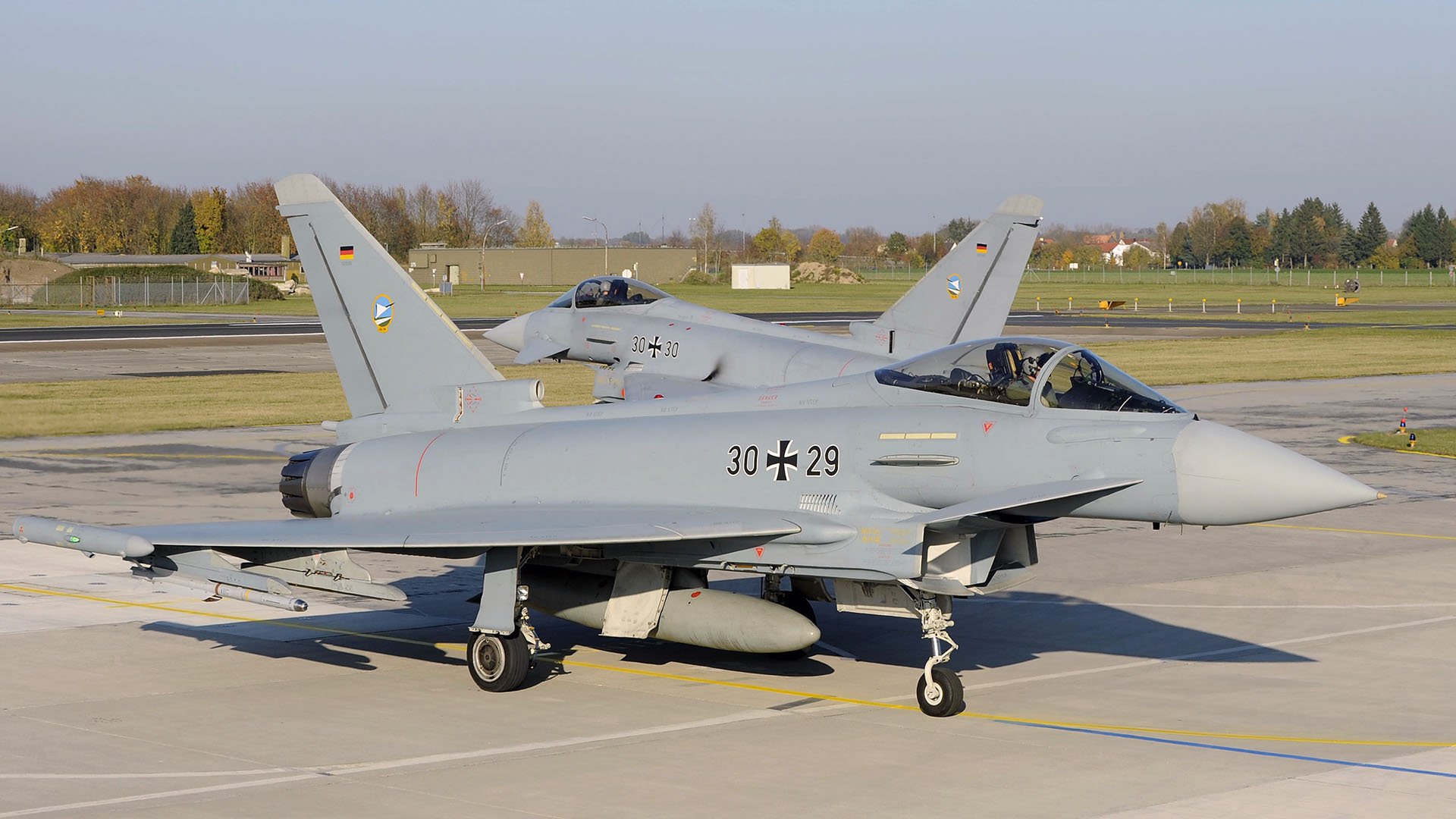
Spain has chosen a different path with a plan to buy new Tranche 4 Eurofighters, while also developing its own indigenous upgrade for its 19 Tranche 1 examples, adding the IRIS-T and AIM-120C-7 air-to-air missiles, Litening III targeting pod, and the GBU-48 precision-guided bomb.
A collaborative approach to the supply of fighter aircraft to Ukraine could be achieved by using surplus Eurofighters from the quartet of European partner nations. The United Kingdom, Germany, Italy, and even Austria, all potentially have jets of a broadly similar standard that could be sent eastward. It would demonstrate political unity, and ensure a wider source of spare parts supply, plus it could leverage training opportunities in European partner nations.
As it stands, the RAF has all but decided to retire its Tranche 1 Typhoons in 2025, with red air being passed essentially to Draken Europe’s L-159s. Moving the Tranche 1 jets to Ukraine would actually make sense from a U.K. force-structure perspective. Amid a pilot training shortfall, the United Kingdom is now keen to concentrate on growing its F-35B force, with a second frontline squadron due to stand up later this year. Offloading the Tranche 1s could have the effect of freeing up pilots for the Lightning Force.
Interestingly, the total of 30 Tranche 1 jets that could be potentially made available by the United Kingdom tallies very closely with the recent request from Col. Yuri Ignat, the chief spokesperson for the Ukrainian Air Force Command, for two 12-aircraft squadrons of new fighters, plus reserves. According to Ignat, such a force would be sufficient, at least at first, to help turn the tables against Russian air power.

Previous attempts by both the United Kingdom and Italy to sell unwanted Tranche 1 jets have not been successful. Other Eastern European nations, like Bulgaria, have considered Eurofighter but ultimately decided against it. This is also about finding the right fit and solution for Ukraine, not just what happens to be going spare at this time.
Pros and cons of the high-tech Typhoon
There is a big question over whether Ukraine would be able to support the costly Typhoon. It’s a complex jet to operate and it’s questionable if it would suit operations from austere or dispersed airfields — Typhoons are traditionally maintained at main operating bases, and moreover, the low-slung intakes bring concerns over ingesting foreign object debris. Also, the Typhoon needs significant infrastructure to support its smart electronic warfare system and advanced avionics. The issue of runway condition could be less of a concern, however, with the recent news that Ukraine is already preparing airfields across the country in anticipation of deliveries of Western fighters. Meanwhile, the RAF is also increasingly looking to make use of highway airstrips as part of its concept of fighter operations, in which Typhoon is central.
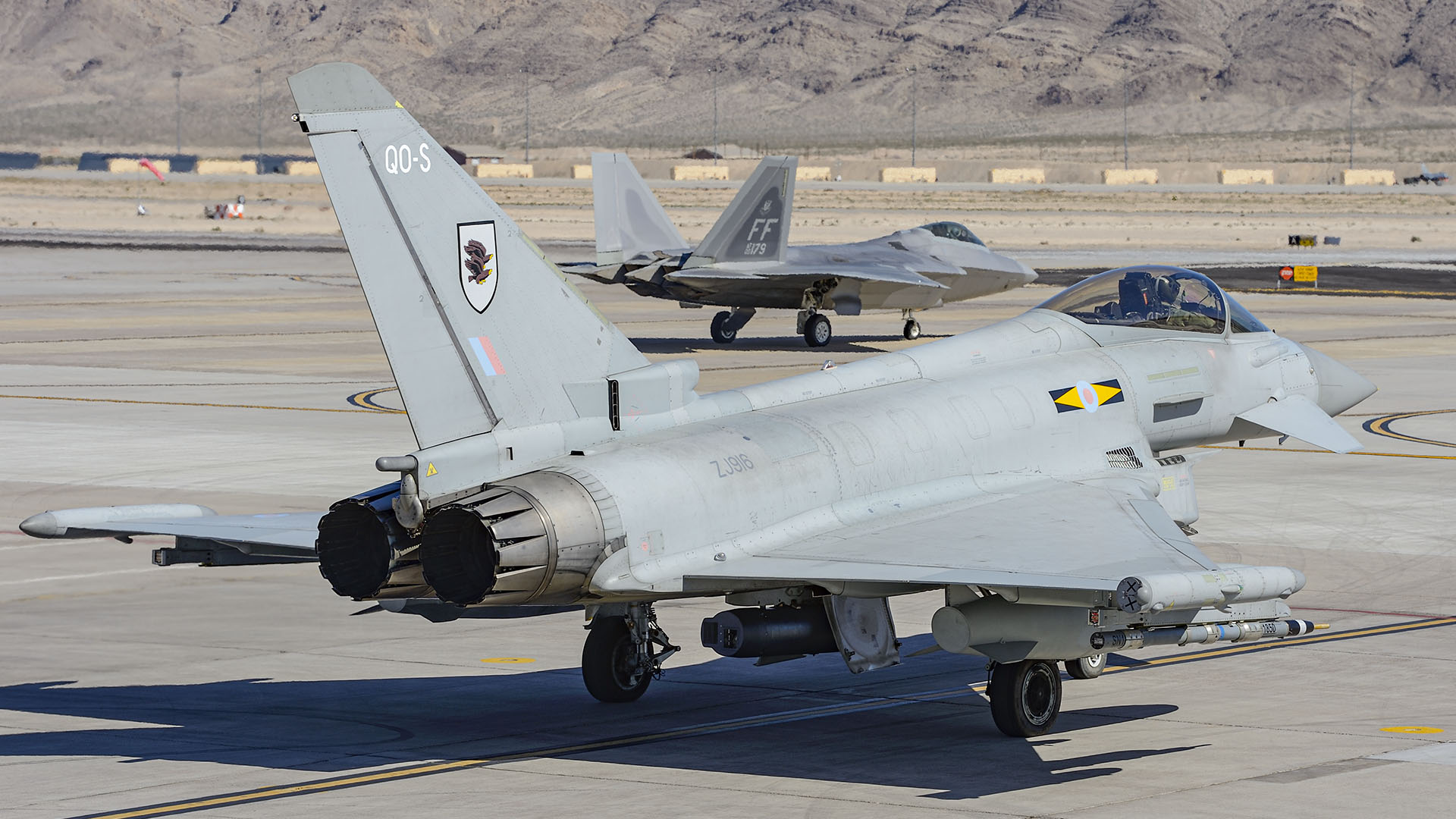
Even though the RAF currently faces pilot training issues, and its Typhoon Force needs a constant flow of new pilots, one option might be to re-role an existing squadron to become a joint RAF/Ukraine unit, and use it to ‘skill up’ experienced Ukrainian pilots in Western tactics, techniques, and procedures, prior to their conversion to whatever Western fighters they do acquire.
This could be very much like the British agreement with Qatar that led to the jointly-operated No. 12 Squadron, based at RAF Coningsby in England. However, with two-seat Eurofighters having been heavily loaded into Tranche 1, and then scrapped, the RAF only has a handful of such jets for training or familiarization needs. The RAF has instead opted for a heavily synthetic simulator-based approach to fighter jet training.

While a basic air-to-ground capability in the RAF’s Tranche 1 jets remains in theory, this role is now dormant for these early Eurofighters. On the other hand, the lack of offensive capacity in these ostensibly air-to-air optimized jets might actually make the Tranche 1 jets more politically acceptable for transfer to Kyiv, since it could satisfy concerns about them being used offensively against ground targets in Russia.
Regardless, the Tranche 1s are highly capable air-to-air fighters. They are extremely agile and powered by the same Eurojet EJ200 engines as the later variants. Their potent mechanically scanned Captor-M radar is credited as being one of the most impressive non-AESA radars in existence, and coupled with the AIM-120 AMRAAM this presents a powerful capability and one that’s very much in line with the long-range missile/radar combination sought by Ukraine. Also noteworthy is the PIRATE (Passive InfraRed Airborne Track Equipment), the Typhoon’s forward-looking infrared and infrared search and track sensor, which would also be very beneficial in a range of scenarios.
A key area where Typhoon doesn’t necessarily suit Ukraine’s operations is at lower levels. Legacy Ukrainian Air Force tactics see its current MiG-29 and Su-27 pilots regularly operating below 1,000 feet to evade the worst of the Russian ground-based air defense system. The Eurofighter and its EJ200 engines are optimized for high-level flight and burn fuel at a high rate when operating down low. On the other hand, its capable self-defense suite would confer improved survivability and awareness, and, operating at greater distances from the front lines compared to current Ukrainian fighters, it could potentially claw back some altitude.
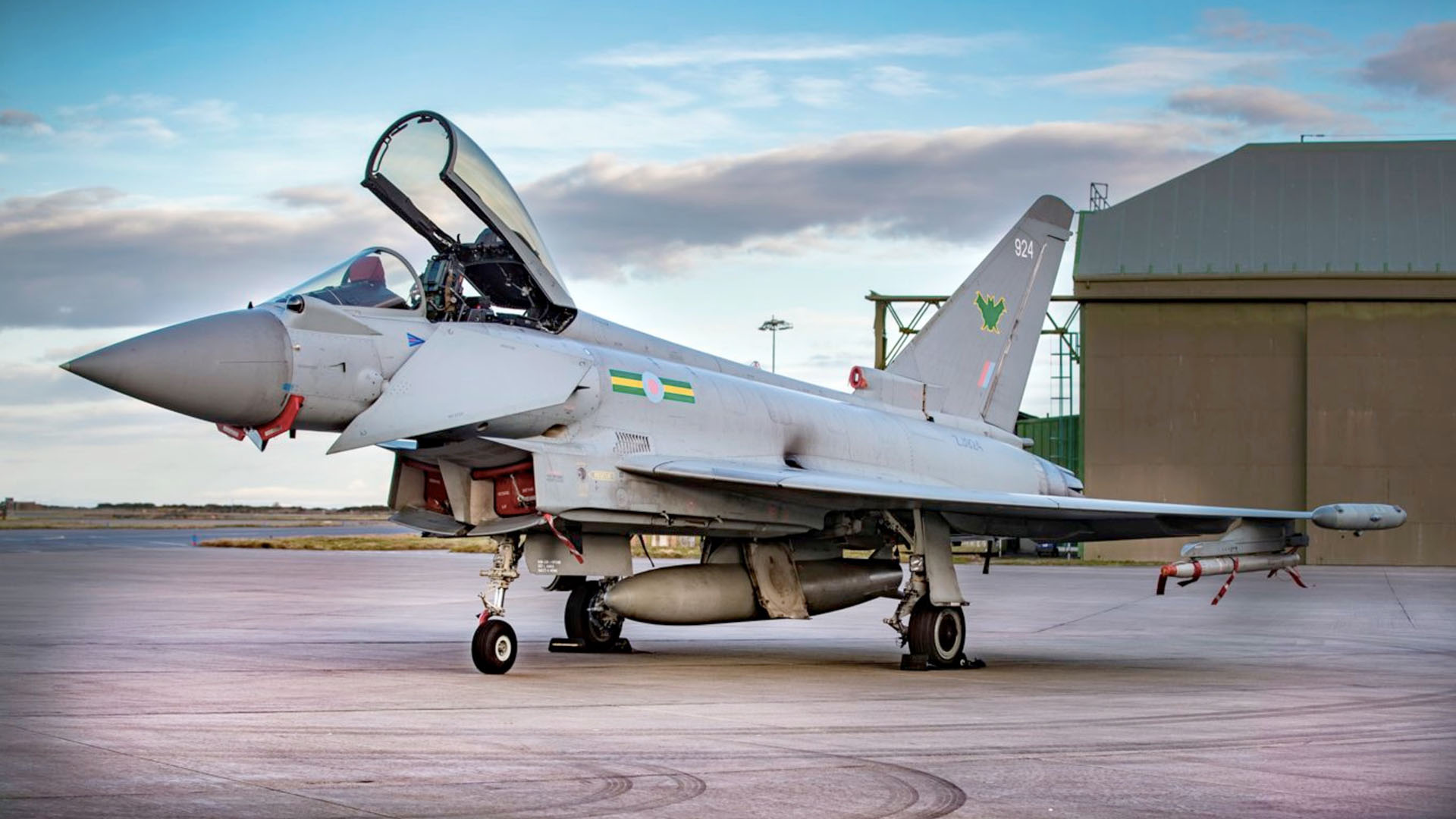
Most importantly, perhaps, with Eurofighter no longer supporting the Tranche 1 Typhoons in terms of formal upgrades, it would be a complex aircraft for Ukraine to operate and support. This is one of the key reasons the RAF has decided that these jets are a ‘legacy’ fleet, and therefore earmarked for retirement.
“The value of a Tranche 1 gift would be almost purely symbolic, rather than a practical and sustainable Ukraine Air Force asset,” Justin Bronk of the Royal United Services Institute (RUSI) told the Daily Telegraph. Of all Typhoons, the Tranche 1s are especially difficult to maintain, with a limited spares supply chain. They are also armed with older weapons, which will bring their own challenges in terms of sustainment, although these are still far more capable than current Ukrainian air-to-air missiles. Finally, they feature classified U.K. mission-data software that allows the jet to be re-programmed to meet evolving threats but which is not currently cleared for export, although conceivably some of this software could be disabled altogether to provide clearance.
Obtaining a complex fighter aircraft such as the Typhoon would clearly be a massive upgrade for the Ukrainian Air Force. And with powerful support from the United Kingdom, Germany, Italy, and Spain, a robust pan-European support package might enable the realization of a long-term future fighter jet solution to meet Ukraine’s air power needs.
Among U.K. officials, it seems that the prospect of fighter transfers any time soon may have diminished already. Speaking at a conference the day after President Zelensky had visited London, U.K. Defense Secretary Ben Wallace said it was more realistic and more productive to envisage the U.K. providing Ukraine with aircraft in the long term, to ensure its security after the war with Russia has ended. As such, the conversation around a new fighter for Ukraine appears to be evolving.
The Typhoon might not be a here-and-now solution, but could be part of a package more directed toward preparing and building for the future. On the other hand, even if Typhoons never make their way to Ukraine, the discussion surrounding them — and similar traction in France, the Netherlands, and Poland — could well help open the floodgates and lead to other NATO-standard jets finally reaching the Ukrainian Air Force, from whatever source. A similar kind of thing has already happened in the case of Western main battle tanks, with the early U.K. offer for the Challenger 2 soon followed by commitments from other allies to send other types of advanced tanks. It would be unwise to bet against fighter jets being the next in line for Ukraine.
Contact the editor: thomas@thedrive.com
